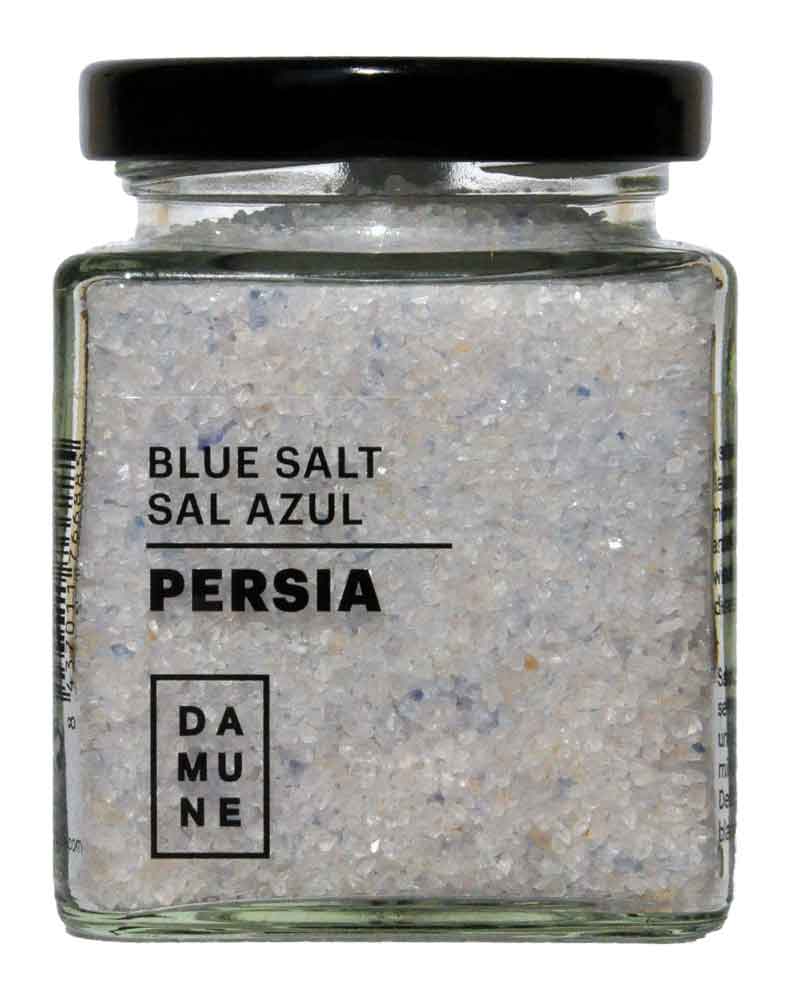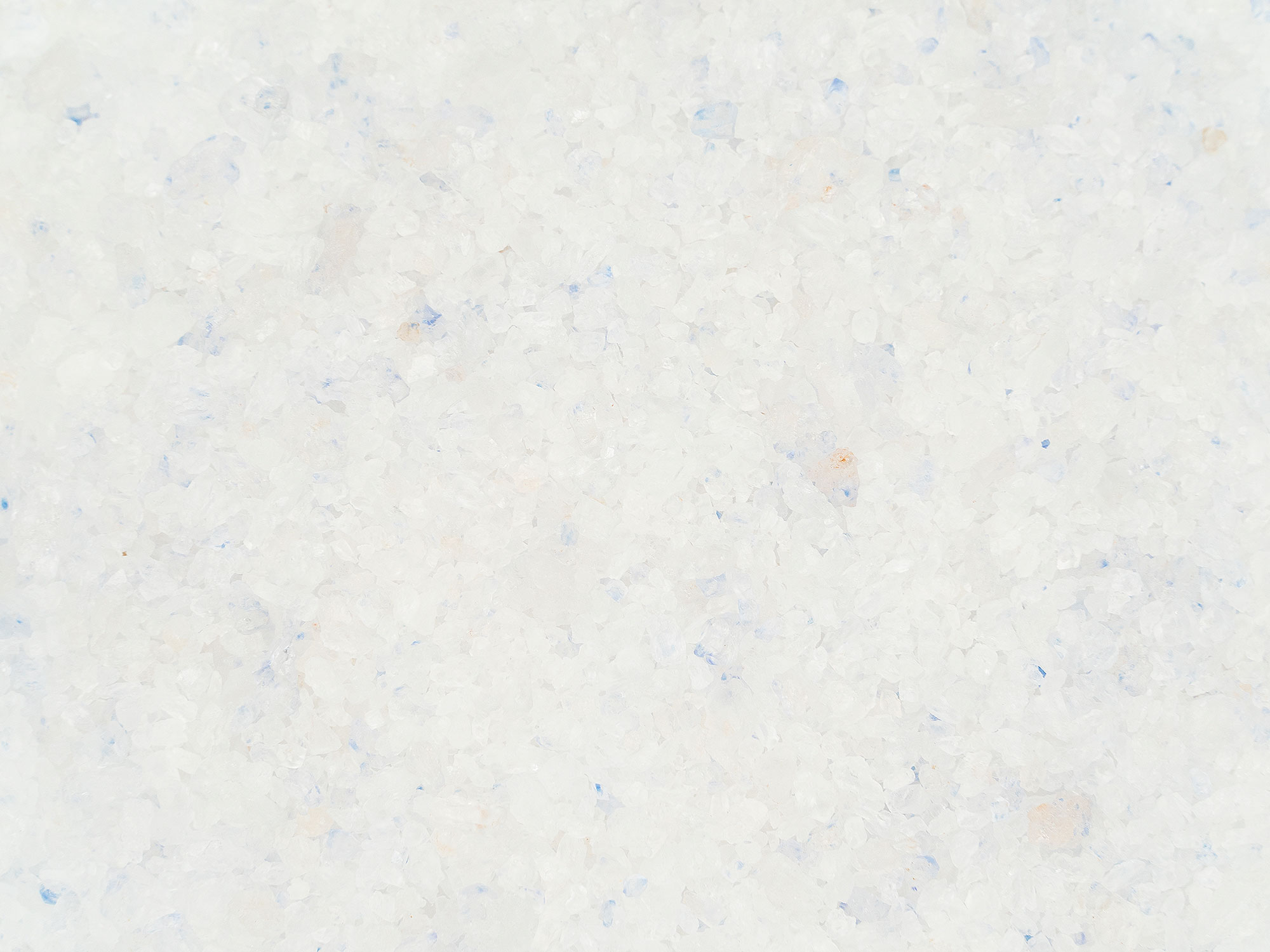Ever heard of sal azul? Yeah, that’s right—blue salt! It’s not just some random trend or a marketing gimmick; it’s a fascinating natural phenomenon that’s been turning heads in the culinary world and beyond. But what exactly is sal azul, and why should you care? Let’s dive into the deep blue sea of this unique seasoning and uncover its secrets.
You might be thinking, “Blue salt? Really? Is this some kind of Photoshop magic?” Nope, my friend. Sal azul is legit, and it’s not as alien as it sounds. This stunningly vibrant salt has been making waves, both literally and figuratively, in the foodie universe. So, if you’re curious about how this oceanic treasure came to be and why it’s so special, buckle up because we’re about to take you on a journey.
Here’s the deal: sal azul isn’t just another pretty face in the spice rack. It’s packed with unique properties that make it stand out from the crowd. Whether you’re a chef, a home cook, or just someone who loves experimenting with flavors, this article will give you all the info you need to decide if blue salt deserves a spot in your pantry. Ready? Let’s get started!
Read also:Kate Winslets Feet A Closer Look At The Stars Hidden Charm
Table of Contents
Read also:Ronda Rousey Current Net Worth The Untold Story Behind Her Financial Success
Environmental Impact of Sal Azul Production
Myths and Misconceptions About Sal Azul
What is Sal Azul?
Let’s cut to the chase: sal azul, or blue salt, is a type of salt that gets its striking hue from natural minerals found in certain regions. Unlike regular table salt, which is often white and processed, blue salt retains its natural color and texture, making it a true gem in the culinary world. But don’t let its looks fool you—this salt is more than just eye candy.
Sal azul is harvested from specific salt flats where the conditions are perfect for creating this magical blue tint. The process involves a combination of mineral-rich water and sunlight, resulting in a salt that’s as unique as it is delicious. And let me tell you, it’s not just the color that sets it apart—it’s the flavor profile too.
Why is Sal Azul So Special?
Well, for starters, it’s rare. Not every salt flat in the world can produce blue salt, so when you find it, you know you’ve hit the jackpot. Plus, its mineral content gives it a distinct taste that’s slightly sweeter and less harsh than regular salt. It’s like a gourmet upgrade for your meals, and trust me, once you try it, you won’t go back.
Origins of Blue Salt
So, where does this mystical blue salt come from? Turns out, it’s not just a product of some magical underwater kingdom (although that would be cool). Sal azul is primarily harvested in regions like Chile, where the unique geological conditions create the perfect environment for its formation.
The key lies in the mineral composition of the water. In these specific areas, the water contains high levels of copper and other trace minerals that react with the salt crystals during the drying process. This reaction is what gives sal azul its signature blue hue. It’s nature’s way of saying, “Hey, look at me—I’m special!”
Historical Significance
While sal azul might seem like a recent discovery, it’s actually been around for centuries. Indigenous communities in regions like the Atacama Desert have long known about this unique salt and used it in their traditional recipes. It’s only in recent years that it’s gained global recognition, thanks to food bloggers and chefs who’ve been raving about its incredible properties.
How Sal Azul is Made
Alright, let’s talk about the process behind creating this blue beauty. It’s not as simple as sprinkling some food coloring into regular salt. No, no, no—sal azul is the result of a carefully controlled natural process that takes time and patience.
Here’s how it works: saltwater from mineral-rich sources is collected and left to evaporate in shallow pools. As the water evaporates, the salt crystals begin to form, and the minerals in the water work their magic, giving the salt its blue color. It’s a slow process, but the end result is worth it.
Key Steps in Production
- Collecting mineral-rich saltwater from specific regions
- Evaporating the water in controlled conditions
- Allowing the salt crystals to form naturally
- Harvesting and packaging the finished product
Health Benefits of Sal Azul
Now, here’s the part you’ve been waiting for: the health benefits. Is blue salt really that much better for you than regular salt? In a word, yes. Sal azul is packed with essential minerals like magnesium and potassium, which are crucial for maintaining good health.
But wait, there’s more! Because it’s minimally processed, sal azul retains more of its natural goodness compared to refined table salt. This means it’s a healthier option for those looking to reduce their sodium intake without sacrificing flavor.
Minerals Found in Sal Azul
- Magnesium
- Potassium
- Calcium
- Iron
Culinary Uses of Blue Salt
So, how exactly do you use sal azul in your cooking? The possibilities are endless! From seasoning your favorite dishes to adding a pop of color to your desserts, blue salt can elevate any meal to the next level.
Here are a few ideas to get you started:
- Use it as a finishing salt for grilled meats and vegetables
- Add a pinch to your pasta dishes for an extra burst of flavor
- Sprinkle it over chocolate desserts for a stunning visual effect
Tips for Using Sal Azul
Remember, a little goes a long way. Because of its intense flavor, you don’t need to use as much sal azul as you would regular salt. Start with a small amount and adjust to taste. And don’t be afraid to experiment—after all, that’s half the fun!
Blue Salt vs. Other Salts
How does sal azul stack up against other types of salt? Let’s break it down:
Table Salt: Processed and stripped of its natural minerals, table salt is a distant cousin to blue salt. While it’s convenient and cheap, it lacks the depth of flavor and health benefits that sal azul offers.
Himalayan Pink Salt: Another popular choice, Himalayan pink salt is known for its beautiful color and mineral content. However, sal azul’s unique blue hue and slightly sweeter taste give it an edge in the culinary world.
Which Salt is Right for You?
It all depends on your preferences and needs. If you’re looking for something that’s both visually stunning and packed with health benefits, sal azul is the way to go. But if budget is a concern, other options might be more suitable.
Where to Buy Sal Azul
Finding sal azul might seem like a challenge, but it’s actually easier than you think. Thanks to the rise in demand, many specialty stores and online retailers now carry this unique salt. Just make sure you’re buying from a reputable source to ensure quality.
Here are a few places to check out:
- Local specialty food stores
- Online retailers like Amazon or Etsy
- Direct from producers in Chile
Environmental Impact of Sal Azul Production
While sal azul is a natural product, it’s important to consider its environmental impact. The production process involves evaporation, which requires a lot of water and energy. However, many producers are working to minimize their footprint by using sustainable practices.
Some farms are even certified as eco-friendly, ensuring that their methods are as gentle on the planet as possible. So, if you’re environmentally conscious, look for blue salt that’s produced sustainably.
Myths and Misconceptions About Sal Azul
There’s a lot of misinformation out there about sal azul. Let’s clear up a few common myths:
Myth 1: Sal azul is artificially colored. Nope! Its blue hue is 100% natural, thanks to the minerals in the water.
Myth 2: It’s just a fad. Actually, sal azul has been around for centuries and is here to stay.
Myth 3: It’s too expensive for everyday use. While it’s true that blue salt is pricier than regular salt, a little goes a long way, making it a worthwhile investment.
Conclusion
There you have it—everything you need to know about sal azul. From its origins in the salt flats of Chile to its culinary and health benefits, this blue beauty is a true standout in the world of salt. Whether you’re a chef, a home cook, or just someone who appreciates good food, sal azul is definitely worth trying.
So, what are you waiting for? Head out and grab yourself some blue salt today. And don’t forget to share your experiences with us in the comments below. We’d love to hear how you’re using sal azul in your cooking!


